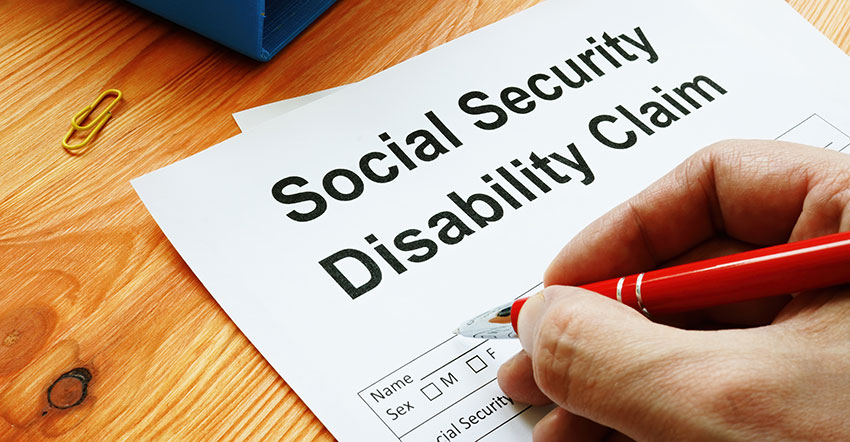Recently, there have been many obstacles and difficulties that make people’s lives harder. It’s common to find yourself struggling financially. This is especially the case if you are dealing with debt from taxes. As a matter of fact, the total American tax debt is somewhere around $527 billion. However, the federal government is mindful of how challenging it is to handle debt. For this reason, the Internal Revenue Service (IRS) offers an assistance program that goes by the name of the “Fresh Start Program”. You may be able to get some relief through this program, which is why you need to fully understand it. In order for this to happen, we created this article to explain everything you need to know about this program.
Explaining the Fresh Start Program
Since people’s circumstances are different, the IRS provides help to taxpayers in different ways. Some of the most common relief options available through the IRS include:
- Installment Agreement (IA)
- Currently Non Collectible (CNC)
- Penalty Abatement
- Offer in Compromise (OIC)
These options together make up the Fresh Start Program. This is opposite to what many people might think it’s a singular program. For over 10 years, this program has been helping those who are trying to pay off their taxes but are struggling under the weight of debt and penalties to find relief. Now, taxpayers can deal with their tax obligations without having to worry about things like jail time, levies, liens, or wage garnishments.
Installment Agreement (IA)
Another option taxpayers may benefit from is Installment Agreement (IA). This option is especially helpful for taxpayers who want to extend the deadline for making their debt payments. This is because, with IA, eligible taxpayers will not have to pay all of their tax debt at once. Instead, they may be able to work out payment arrangements and installment agreements with the IRS and the state tax agencies.
Who Qualifies for IA?
Just like any other assistance option, there are specific eligibility requirements applicants have to meet. Those requirements include:
- Proof of inability to pay off debt by providing relevant documentation.
- Showing that they can’t get a loan to cover their debt.
- Tax filings are up-to-date.
- Showing their financial resources and property.
Applying for IA
The IA’s application process might seem confusing to some people. For this reason, it’s better to consult a tax specialist. They will be able to help you figure out how to handle your application. If you want a higher chance of avoiding the negative consequences of not paying off your tax debt, you should apply as soon as possible.
Currently Non Collectible (CNC)
There is an actual chance of not needing to pay back tax debt at all! This is possible through the Currently Non Collectible (CNC) program. However, it wouldn’t make sense if this opportunity was available to every taxpayer in the country. If a taxpayer wants to benefit from this assistance option, they have to be recognized by the IRS and their state. This can only happen if the taxpayer’s gross monthly income does not exceed the allowable expenses based on the national standards. Meeting this requirement means that the taxpayer is unable to pay off their debts without dealing with financial difficulties. As a result, the government stops collecting your tax debt if approved for the program.
What are the Advantages of the CNC Program?
The fact that participants might never have to pay back their debt after enrolling in this program is one great perk. In fact, the statute of limitations on the debt does not stop running just because the taxpayer is now in CNC status. If their tax debt has not been paid after the 10-year statute of limitations, the debt may be treated as non collective. This timeframe is also known as the Collection Statute Expiration Date, or CSED.
Another amazing advantage that this program offers is that the IRS (or state taxation authorities) will no longer garnish wages, levy bank accounts, or seize property of participants. These advantages can make a world of difference in the beneficiaries’ financial situations. Most importantly, people will have a place to turn for help with their massive tax bill. They won’t need to worry about having their debt collected.
Important Notes to Keep in Mind
It’s important to remember that the application process can be detailed, thorough, and perhaps time-consuming. This is because not all taxpayers who apply will be able to actually participate in the program. Some of them will be rejected. It’s also important to understand that participating doesn’t necessarily mean full relief from tax debt. In fact, even if someone qualifies for this program, they might still have to pay back some or all of the money they owe.
Depending on each taxpayer’s circumstances, the IRS will determine whether they should pay off all of their tax debt or just a portion of it. For this reason, the IRS will typically conduct regular financial checks on people with CNC status. So, participants may lose their eligibility if they do not provide the information the IRS requires.
Penalty Abatement
It’s common for IRS penalties to build up quickly and significantly increase an already hefty tax obligation. However, there is a relief opportunity that can help with this problem. Penalty abatement is a possible solution if you’re receiving IRS penalties. But to take advantage of this option, you need to have a reasonable cause. You might find it difficult to go through the application process all by yourself. Therefore, it is best to consult a tax expert for clarification on this potentially confusing program.
Offer in Compromise (OIC)
This opportunity is pretty exclusive to benefit from. That’s because less than half of the applicants are accepted into the program annually (even if they qualify!). However, it’s not surprising that they have such a low acceptance rate. That’s because it allows qualifying taxpayers to pay less than what they actually owe. Through coming to an agreement with the IRS they can settle their debt for a reduced amount!
When processing your application, the IRS will typically check your taxes for the last six years. This way, they can make sure that you have filed all of your previous tax returns accurately and in full compliance with the law. This process can be much easier with the assistance of a tax expert. They can help you increase your chances of getting accepted into this program and provide you with the information you need.
After you send in your application, the IRS will look at your current financial situation to decide if you are eligible for this support. There may be more details and documents they need from you, so you should have them available. However, if your application is denied, you will have the right to file a formal appeal within 30 days from the date of your rejection letter.
In Conclusion
Dealing with tax debt is challenging for many people. However, it can be easier with some assistance. You may qualify for relief under the Fresh Start Program if you’re one of the taxpayers with tax debt. Different forms of assistance are available through this program, including:
- Currently Non Collectible (CNC)
- Installment Agreement (IA)
- Offer in Compromise (OIC)
- Penalty Abatement
It’s generally recommended to get started as soon as possible. This can be very useful in avoiding problems when tax time comes around. You should consult a tax expert to determine which tax relief option is best for you. They can guide you toward the most appropriate form of assistance for your unique circumstance and assist you with the application process.




